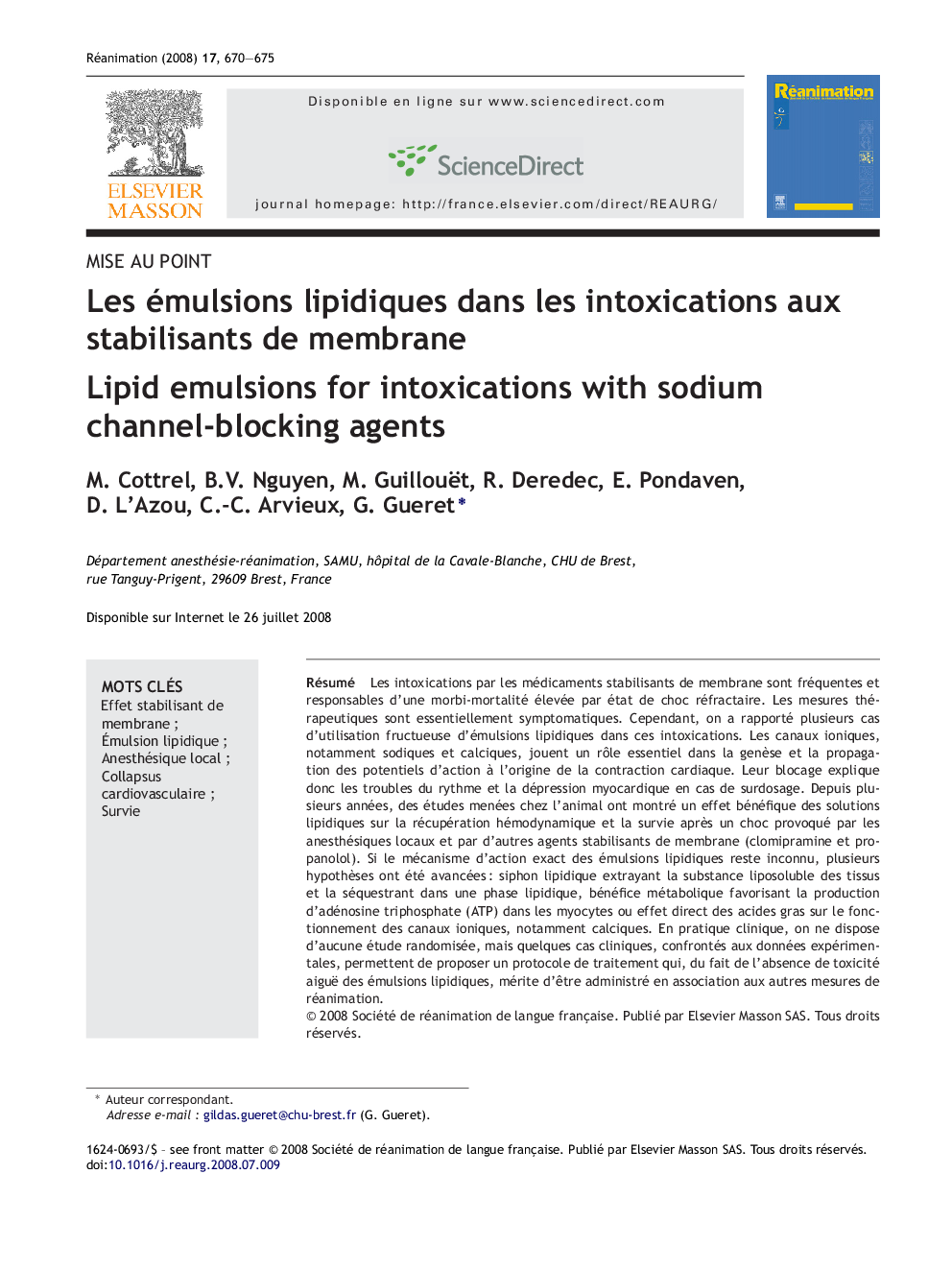| Article ID | Journal | Published Year | Pages | File Type |
|---|---|---|---|---|
| 2613760 | Réanimation | 2008 | 6 Pages |
Abstract
Intoxications with sodium channel-blocking agents are an important cause of morbidity and mortality due to refractory cardiotoxicity. While treatments are mainly supportive, successful use of intravenous fat emulsions has been reported in several cases. Ion channels including sodium and calcium channels play a major role in generating and conducting action potentials that initiate myocardial contraction. Sodium channel blockade therefore explains arrhythmias and myocardial depression in overdoses. In animal studies, Intralipid® was shown to be beneficial on hemodynamic recovery and survival after cardiovascular collapse caused by local anaesthetics as well as other membrane stabilising agents (clomipramine and propanolol). Although the exact mechanism of lipid rescue is still unknown, several hypotheses have been suggested: “lipid sink” removing the lipophilic drug from tissues into a lipid phase, metabolic benefit on myocardial ATP synthesis or direct effect of free fatty acids on ion channels, especially calcium channels. In clinical practice, based on human cases and experimental reports since no randomised study is available, lipid emulsions should be considered as a complement of conventional cardiovascular support, given its reported safety.
Keywords
Related Topics
Health Sciences
Medicine and Dentistry
Emergency Medicine
Authors
M. Cottrel, B.V. Nguyen, M. Guillouët, R. Deredec, E. Pondaven, D. L'Azou, C.-C. Arvieux, G. Gueret,
